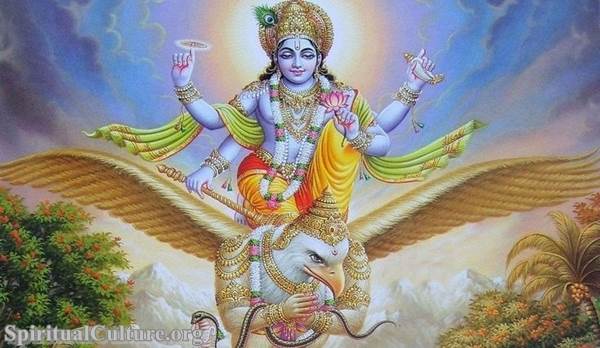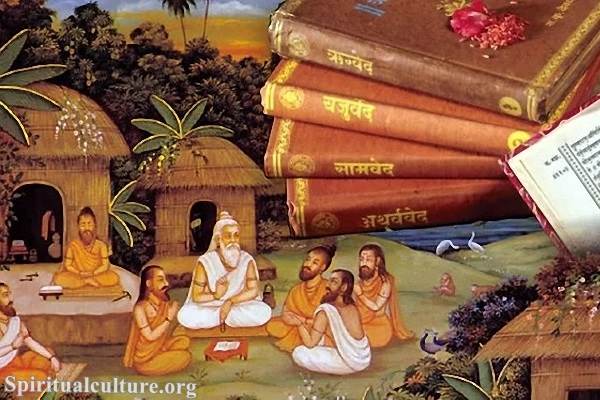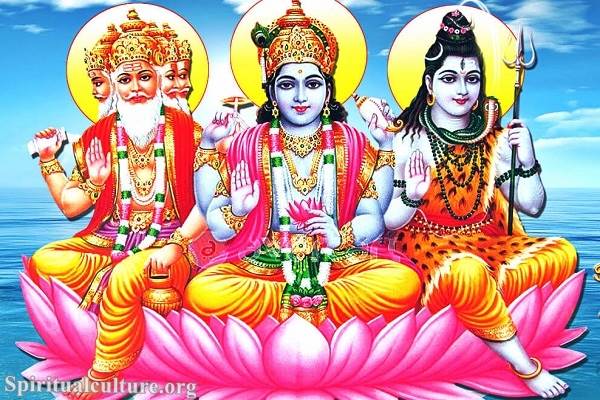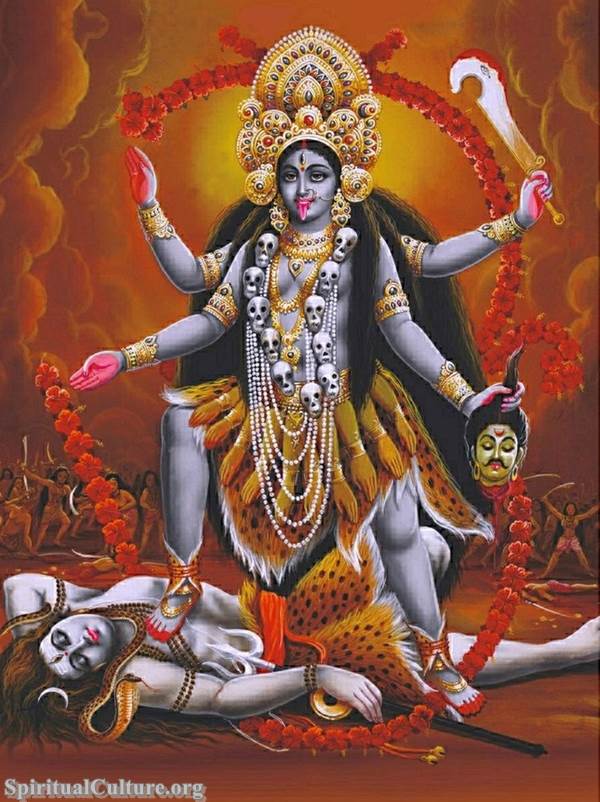Creation. A word that echoes with beginnings, with origins, with the first spark of existence. But in Hinduism, this spark is not a one-time event. It is part of a vast, eternal rhythm — a cosmic breath that moves through time like the tide. Rather than a linear story with a clear beginning and end, the Hindu view of creation unfolds as an eternal cycle of birth, preservation, dissolution, and rebirth.
As Spiritual Culture, we invite you to journey through this sacred cosmology — to understand not only how the universe is created and destroyed in Hindu thought, but why this cycle matters for the soul, for society, and for the search for truth.
In this article, we will explore the cyclical model of the universe in Hinduism, its connection to divine forces like Brahma, Vishnu, and Shiva, the significance of cosmic time (Yugas and Kalpas), and the spiritual implications of living in a universe that never truly ends — but always begins again.
The Eternal Wheel of Time: An Overview of Hindu Cosmology
The Universe as a Living Cycle
Hinduism sees time as cyclical, not linear. This is known as kalachakra — the Wheel of Time. Just as the seasons follow one another, or the moon waxes and wanes, the cosmos too undergoes recurring phases:
- Creation (Srishti)
- Preservation (Sthiti)
- Destruction or Dissolution (Samhara or Pralaya)
- Rest and Re-creation (Tirobhava and Anugraha)
This cycle continues eternally — the universe is born, it lives, it ends, and then it is born again.
Why a Cycle?
To the Hindu mind, the idea of eternity is not a straight line but a rhythm — like the beat of a drum or the inhale and exhale of breath. Life, death, and rebirth are not just personal experiences, but cosmic truths. The same forces that govern the life of a flower or a human being also govern the universe.
This view encourages detachment and spiritual insight. Nothing is final. All that arises will pass — and return again in new form.
The Trinity of Creation: Brahma, Vishnu, and Shiva
Brahma: The Creator
Brahma is the deity traditionally associated with the act of creation. He brings forth the cosmos from a state of unmanifest potential. Yet in Hinduism, Brahma is not the supreme God, but one aspect of the divine process.
According to the Puranas, Brahma emerges from a lotus that springs from the navel of Vishnu, signifying that even the creator is a creation.
“In the beginning, there was neither existence nor non-existence… Then That became manifest.” — Rig Veda 10.129
Vishnu: The Preserver
Vishnu sustains and preserves the universe. He incarnates as avatars (like Rama and Krishna) to restore balance when dharma (cosmic law) is threatened. His role in the cycle reflects the divine grace that upholds life.
Vishnu is also said to sleep between cycles on the cosmic serpent Ananta, floating on the primordial ocean, awaiting the next creation.
Shiva: The Destroyer and Liberator
Shiva does not destroy in anger, but with sacred purpose. His destruction is transformative, allowing for renewal and liberation. Through his dance (Tandava), he dissolves the old, clearing the way for rebirth.
This cycle — creation, preservation, destruction — is not seen as violent but as sacred, natural, and necessary.
Yugas and Kalpas: Cosmic Time in Hindu Thought
Understanding the Yugas
Time is divided into four great ages (Yugas), each with declining levels of spiritual awareness:
- Satya Yuga (Golden Age) – Truth and virtue reign
- Treta Yuga – Dharma declines slightly
- Dvapara Yuga – Further decline, conflict increases
- Kali Yuga – The current age, marked by strife, ignorance, and moral decay
Each Yuga spans thousands to millions of human years. A full cycle of these four Yugas is called a Maha Yuga.
“When virtue is on the decline and unrighteousness rises, I manifest Myself…” — Bhagavad Gita 4:7
Kalpas and the Life of Brahma
Larger than Yugas are Kalpas, each representing one day of Brahma, lasting over 4.3 billion human years. A full life of Brahma — 100 of these divine years — spans a Maha-Kalpa, after which even Brahma ceases to exist, and everything returns to the unmanifest (Brahman), before beginning again.
Creation Stories in Hindu Texts: Diverse Yet Unified
Rig Veda and Nasadiya Sukta
The Nasadiya Sukta (Rig Veda 10.129) is one of the most enigmatic and profound creation hymns in world literature. It does not claim certainty but reverently acknowledges mystery:
“Whence all creation had its origin — he, whether he fashioned it or whether he did not… he who surveys it from the highest heaven, he knows — or perhaps even he does not know.”
This humility before the mystery of existence reflects a spiritual openness that is rare among ancient cosmologies.
Puranic Accounts
The Puranas offer more narrative and mythological versions — with detailed descriptions of how the world arises from chaos, the role of various deities, and the ordering of the cosmos.
In one telling, the universe emerges from a cosmic egg (Hiranyagarbha), symbolizing the latent potential of creation.
Beyond Time: The Role of Brahman and Atman
The Source Behind All Cycles
At the heart of all creation is not just Brahma, Vishnu, or Shiva — but Brahman, the unchanging, infinite reality that underlies everything. It is not a god in the personal sense but the ground of Being itself.
Brahman is beyond the cycle. It is eternal. It is pure consciousness.
Atman: The Self and the Cosmos
Hinduism teaches that our true self (Atman) is not separate from Brahman. This realization is the goal of spiritual practice. In a universe that endlessly recycles, the soul can transcend the cycle through self-realization.
This is why creation stories in Hinduism are not just about the world “out there” — but about the inner journey of awakening.
“That thou art (Tat Tvam Asi)” — Chandogya Upanishad 6.8.7
Why a Cyclical Universe Matters Spiritually
Embracing Impermanence
In a linear worldview, endings can feel final — death, loss, collapse. But in a cyclical view, endings are beginnings in disguise. Nothing is wasted. Everything returns.
This fosters detachment, trust, and inner peace.
A Call to Live Dharma
Because time moves in cycles, and decline is inevitable (especially in Kali Yuga), Hindu texts call us to live with integrity and wisdom, not to escape the world but to uplift it while we can.
Each soul, like the cosmos, goes through cycles — and each moment is a sacred opportunity to align with truth.
Connections to Modern Science and Thought
Parallels with Modern Cosmology
Interestingly, some modern scientific theories — like the oscillating universe model or cyclic cosmology — bear a resemblance to Hindu ideas. These theories suggest the universe may expand, collapse, and re-expand again over unimaginable timescales.
While science cannot yet confirm or deny this, it is intriguing that ancient Hindu sages intuited such a vision millennia ago — not through telescopes, but through consciousness.
Symbolism in Culture and Life
The cyclical model influences Indian art, ritual, dance, and literature. The mandala, for instance, reflects cosmic order; temple rituals mimic the rhythms of the cosmos. Festivals like Navaratri and Diwali reflect cyclical renewal — of light over darkness, of truth over chaos.
Even in daily life, Hindus engage in samskara (life-cycle rituals) that mark transitions not as endpoints, but as transformations.
What This Means for You
Reflect and Reimagine
The Hindu view of creation as a cycle is not just a cosmic idea — it’s an invitation to live differently. To see life as flow, not fixation. To greet endings with hope, not despair. To trust that everything unfolds in time — again and again — with divine purpose.
In a world obsessed with speed, progress, and control, Hindu cosmology reminds us that there is no straight path to truth — only sacred spirals, rising ever closer to realization.
And in those spirals, we find meaning. We find God. We find ourselves.
Spiritual Culture invites you to reflect on your own cycles — the rhythms of your heart, your thoughts, your life. What is being born in you? What is being let go? And what waits in the silence, ready to rise anew?
Let the wheel of time turn, but let your soul awaken beyond it.




